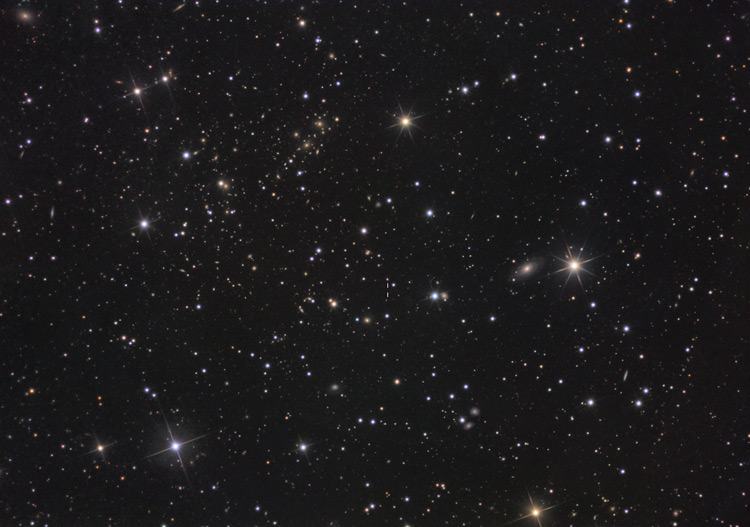
|
Credit & Copyright: Johannes Schedler
(Panther Observatory)
Additional Image Data: Ken Crawford (Rancho Del Sol Observatory)
Explanation:
Spiky stars are nearby, but
fuzzy galaxies are strewn far across
the Universe in this cosmic view.
Spanning about 1/2 degree on the sky,
the pretty picture is the result of astronomer Johannes
Schedler's project to look back in time,
toward a quasar 12.7
billion light-years away.
The quasar is just visible in the
full resolution image at the
position marked by short vertical lines (center).
The intrinsically bright nucleus of a young,
active galaxy powered by a supermassive black hole, the quasar
was recently identified
as one of the most distant
objects known.
Since
light
travels at a finite speed, the
galaxies receding into the distance are seen as they
were in the increasingly remote past.
The quasar appears as it did about 12.7 billion years ago,
when the Universe was just 7 percent of its
present age.
Of course,
the
expansion of the Universe
has redshifted the light.
Schedler added image data extending to the near-infrared,
acquired by collaborator Ken Crawford,
to detect the distant quasar, with a measured
redshift of 6.04.
Additional Image Data: Ken Crawford (Rancho Del Sol Observatory)
|
January February March April May June July August September October November December |
| ||||||||||||||||||||||||||||||||||||||||||||||||
NASA Web Site Statements, Warnings, and Disclaimers
NASA Official: Jay Norris. Specific rights apply.
A service of: LHEA at NASA / GSFC
& Michigan Tech. U.
Based on Astronomy Picture
Of the Day
Publications with keywords: quasar - redshift
Publications with words: quasar - redshift
See also:
